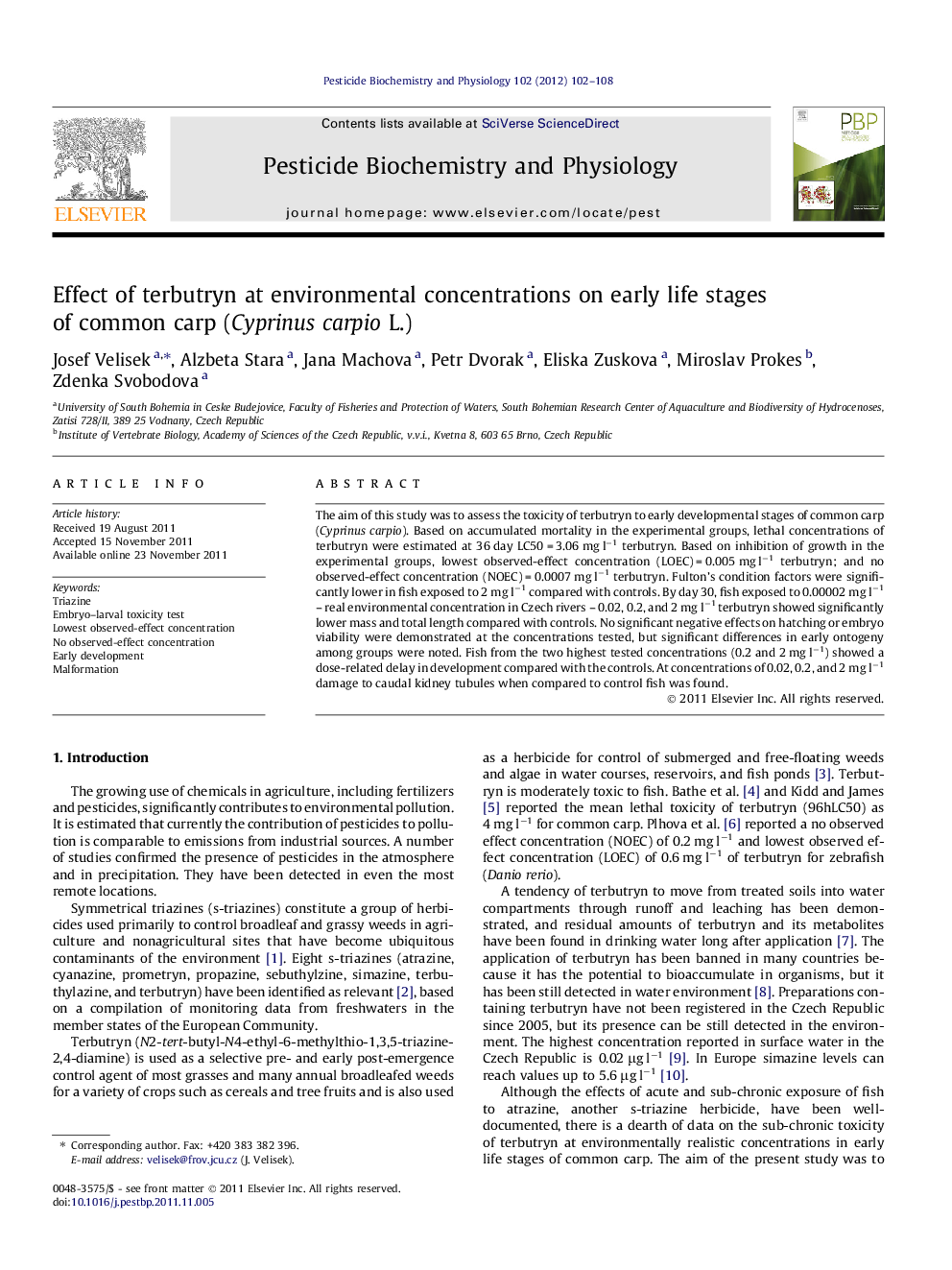| Article ID | Journal | Published Year | Pages | File Type |
|---|---|---|---|---|
| 2009686 | Pesticide Biochemistry and Physiology | 2012 | 7 Pages |
The aim of this study was to assess the toxicity of terbutryn to early developmental stages of common carp (Cyprinus carpio). Based on accumulated mortality in the experimental groups, lethal concentrations of terbutryn were estimated at 36 day LC50 = 3.06 mg l−1 terbutryn. Based on inhibition of growth in the experimental groups, lowest observed-effect concentration (LOEC) = 0.005 mg l−1 terbutryn; and no observed-effect concentration (NOEC) = 0.0007 mg l−1 terbutryn. Fulton’s condition factors were significantly lower in fish exposed to 2 mg l−1 compared with controls. By day 30, fish exposed to 0.00002 mg l−1 – real environmental concentration in Czech rivers – 0.02, 0.2, and 2 mg l−1 terbutryn showed significantly lower mass and total length compared with controls. No significant negative effects on hatching or embryo viability were demonstrated at the concentrations tested, but significant differences in early ontogeny among groups were noted. Fish from the two highest tested concentrations (0.2 and 2 mg l−1) showed a dose-related delay in development compared with the controls. At concentrations of 0.02, 0.2, and 2 mg l−1 damage to caudal kidney tubules when compared to control fish was found.
Graphical abstractFigure optionsDownload full-size imageDownload as PowerPoint slideHighlights► Has terbutryn influence to carp larvae and embryos at environmentally realistic concentration. ► Terbutryn reduced growth in carp larvae and embryos. ► Terbutryn caused delay in development in carp. ► Terbutryn caused lipid inclusions in hepatocytes, destruction of caudal kidney tubules.
